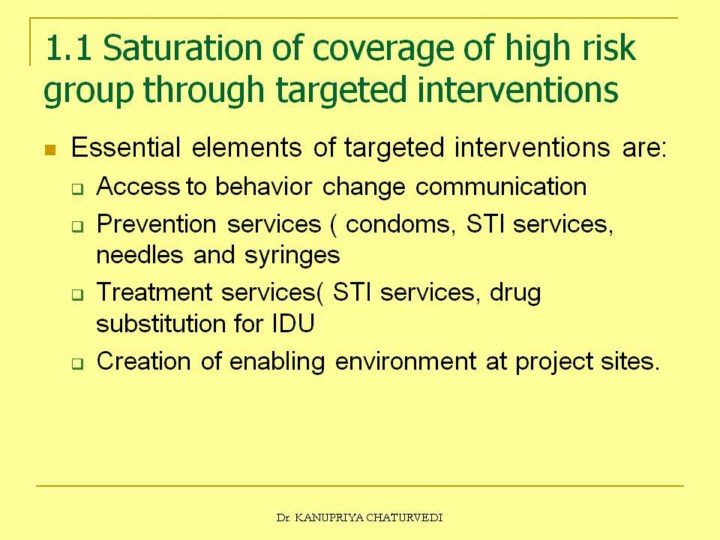| front |1 |2 |3 |4 |5 |6 |7 |8 |9 |10 |11 |12 |13 |14 |15 |16 |17 |18 |19 |20 |21 |22 |23 |24 |25 |26 |27 |28 |29 |30 |31 |32 |33 |34 |35 |36 |37 |38 |39 |40 |41 |42 |review |
 |
Prevention is the mainstay of the strategic response to HIV/AIDS in India as 99 percent population of the country is uninfected. The HIV prevalence pattern in the remaining one percent population largely determines the prevention and control strategy for the epidemic in the country. The HIV prevalence trend in the country shows disproportionately higher incidence of the infection among certain population groups. An analysis of Annual Sentinel Surveillance data (2003-2005) shows that female sex workers (FSWs), men-who- have-sex-with-men (MSM) and injecting drug users (IDUs) have disproportionately higher incidence of HIV infection. Whereas HIV prevalence in the general population is 0.88 percent, its prevalence among FSWs is 8.44%, IDUs 10.16%, MSM 8.74% and among the attendees of STD clinics it is 5.66%( see the table below). To gain control over HIV/AIDS spread in the country therefore effective interventions are needed for HRGs. Targeted Interventions for Prevention, Care and Treatment For the overall reduction in the epidemic, targeted interventions (TIs) are aimed to effect behaviour change through awareness raising among the high risk groups and clients of sex workers or bridge populations. These interventions are aimed to saturate three high risk groups with information on prevention; address clients of sex workers with safe sex interventions, and build awareness among the spouses of truckers and migrant workers, women aged 15 to 49 and children affected by HIV or vulnerable population groups. Apart from prevention of HIV infection, TIs facilitate prevention and treatment of sexually transmitted diseases as they increase the risk of HIV infection, and are linked to care, support and treatment services for HIV infected |